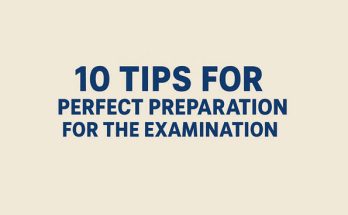How to Create a Custom Study Plan Using Past Papers: A Step-by-Step Guide
So, what is the secret to success while preparing for examinations, pertinent and careful preparation? Whether you are looking to reform or upgrade your study solution, preparing a specific study plan based on past papers is one of the best ways. By including previous papers in your ideas to revise, it will let you become familiar with the exam format, while also knowing the topics that have emerged often. We will do How to Create a Custom Study Plan Using Past Papers, so that you can maximize your chances of killing your Exams.

Why Include Past Papers in Your Study Plan?
Before we get into How to Create a Custom Study Plan Using Past Papers, let’s explore the value of past papers. Benefits of past papers include:
Historic papers demonstrate the shape of the exam, the kinds of inquiries that are often made, and the level of difficulty.
Noting Down Key Topics: The past papers will help you pick up the repeated topics easily so that you can concentrate on the most important areas of the syllabus.
Practicing time management: You can take a few past papers and solve them in the same conditions that you would in a real exam.
Reducing Fear: Knowing what examination questions look like, you will reduce the maximum fear you had in your mind.
Now that we know the importance of the past papers, let’s discuss How to Create a Custom Study Plan Using Past Papers.
How to Generate a Custom Study Route through Past Papers
Makes a plan and make a strategy for preparing a custom study plan using the past paper is systematic. Here’s an illustration of how to get started step by step.
Step 1: Collect Past Papers
The first thing you need to do is collect past papers for the subject you are studying. A lot of academic institutions have past papers that are made available through their websites or are used through the medium of online portals and libraries. If you have time, try to gather all the past papers from the past 5–10 years. You have more past papers to obtain an excellent sense of what is typical for the examination.
Step 2: Read your past papers
After collecting the past papers, this is where you start analyzing the papers and finding the common topics on the papers. Concentrate on the questions that are most frequently asked and the topics that are repeatedly tested. This gives you an idea of the topics that you should prioritize in your study plan. These will be essential to help you develop your tailored study plan, so make sure to take note of them!
Step 3: Divide Your Syllabus
With this knowledge in hand, dissect the syllabus into small, bite-sized pieces. Based on the past papers, prepare a list of topics that require maximum focus. This will also guarantee that you are learning the topics that will most likely be examined so you can maximize your time and effort.
Step 4: Divide Time Based on Difficulty
While preparing a custom study plan based on Past papers, make sure that you allot more time for difficult or heavily tested concepts. Silly topics or topics with fewer questions in past papers can be given less time. Be honest about how much time things will take and be sure to leave plenty of room for revision.
Step 5: Schedule Mock Exams Frequently
One important component of How to Create a Custom Study Plan Using Past Papers is doing mock practice. In your study schedule, carve out time to sit for full-length practice tests in a timed setting. It will help you determine your progress, understand the areas you need to work on, and refine your approach to taking the exam.
Step 6: Modify Holdings Based on Progress
A flexible approach to studying is crucial. Monitor your progress while going ahead with your study schedule. If you feel you need extra time on a given topic or are finding certain question types to be particularly stubborn, modify your plan. Staying flexible and reassessing your study plan will keep you on target to reach your final destination.
Getting the Most out of Your Study Program with Past Papers
Here are some tips to make the most of your study plan: Work on What You Find Difficult: While analyzing past papers, focus more on the areas where you find it more difficult.
Avoid Burnout: A custom study plan made with past papers shouldn’t leave you burnt out. Tackle small, manageable chunks each day to prevent burnout.
Evaluate Errors: When you finish a paper or mock, spend time on going through your errors. It is an important aspect of the feeling of learning.
Practice Past Papers and Timed: Always practice past paper under exam conditions Give yourself a timing and try to eliminate distractions, as you would during a real test.

Conclusions: How to Plan for Exams with a Personal Study Program
How to Plan for Exams with a Personal Study Program can help improve your exam preparation. This way, you can make the most of your revision, focusing on what matters most in the exam. To ensure you’re on track and feeling confident going into exam day – practice past papers under timed conditions regularly and adjust your plan when necessary!
Keep in mind that a personalized study plan is one of the best ways to guarantee that you’re studying efficiently and effectively. If you power through with determination, consistency, and a good plan, you’ll be well on your way to smashing the exam!
FAQs
How many of the previous papers should I create a custom study plan?
When looking to understand exam trends, however, it is best to work from 5-10 years’ worth of past papers. The more you analyze, the easier it will be for you to find patterns and topics that are tested frequently.
Is using past papers enough to prepare for exams?
Past papers are an excellent resource, but should be incorporated into an extensive study regime. You are recommended to take time from books, notes, and online study materials for a deep knowledge of concepts.



